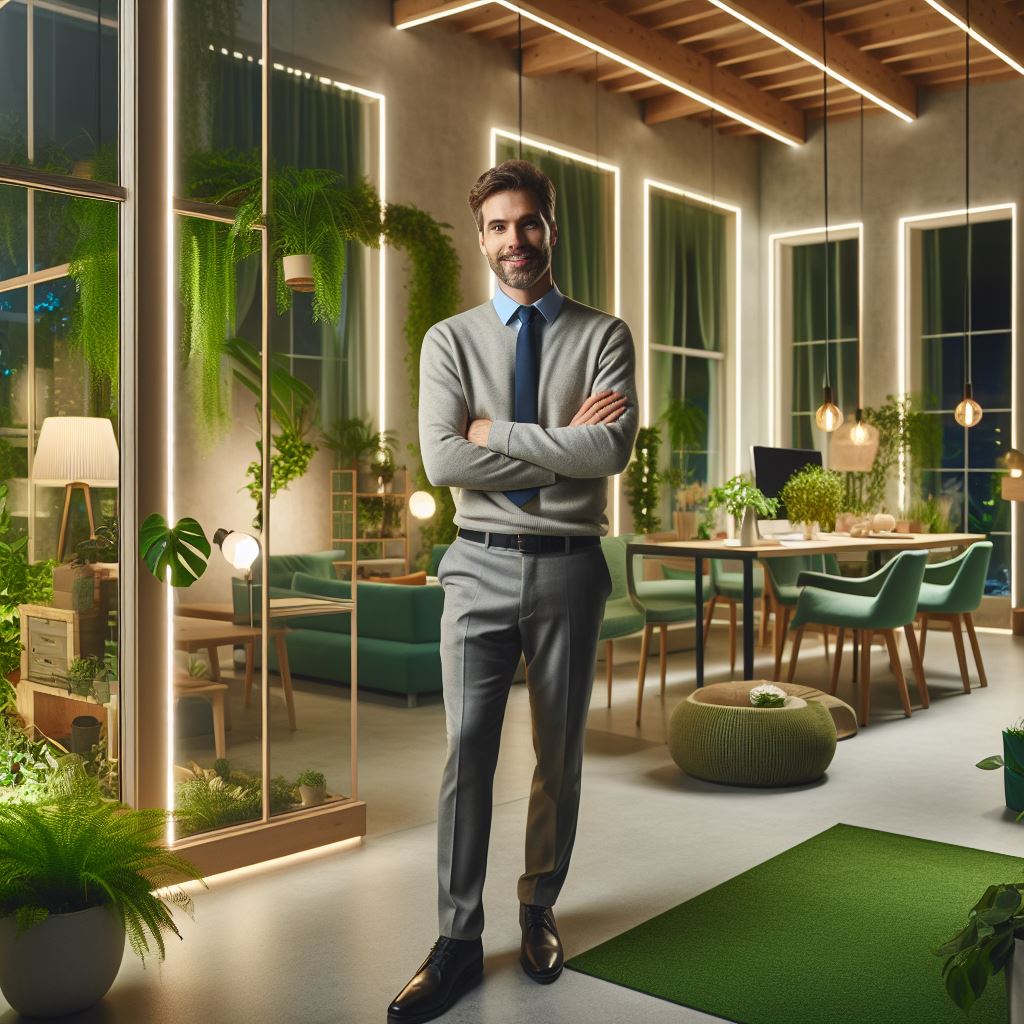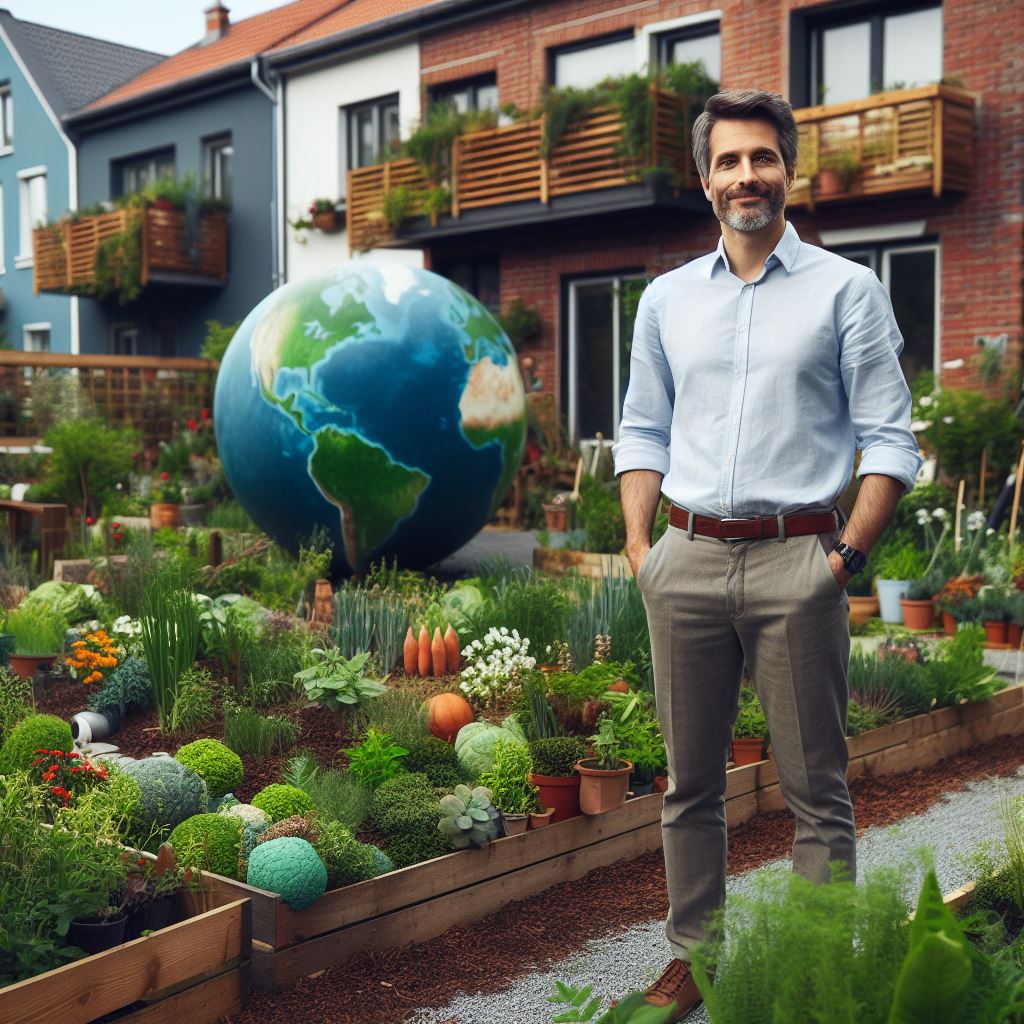Introduction
Mixed-use properties are becoming a significant trend in the commercial real estate (CRE) industry for 2024.
These properties combine multiple functions such as residential, retail, and office spaces in one development.
They offer convenience and efficiency, as people can live, work, and shop in the same location.
Mixed-use properties refer to real estate developments that incorporate multiple types of land use, such as residential, commercial, and/or industrial, within the same project.
These developments aim to create vibrant, walkable communities.
Significance of trends in the CRE industry
The trends in the CRE industry, specifically mixed-use properties, have far-reaching significance.
They cater to the changing demands of consumers who seek convenience, walkability, and a live-work-play lifestyle.
These properties also foster community engagement and sustainability by reducing commute times and promoting local businesses.
Furthermore, mixed-use properties offer economic benefits for developers and investors as they increase property value and attract a diverse range of tenants.
The combination of residential, commercial, and office spaces creates a symbiotic relationship that supports the local economy and enhances the overall quality of life.
In essence, mixed-use properties are a fast-growing trend for 2024 in the CRE industry.
They provide numerous benefits, including convenience, community engagement, sustainability, and economic advantages.
Developers and investors are seizing this opportunity to meet the evolving desires of consumers for integrated and vibrant spaces.
Overview of mixed-use properties
Mixed-use properties have become a significant trend in the commercial real estate (CRE) industry, with their popularity expected to continue growing by 2024.
What exactly are mixed-use properties? They are developments that combine different types of land use within a single building or neighborhood.
Transform Your Real Estate Decisions
Unlock personalized real estate insights crafted just for you. Get actionable advice designed to amplify your success.
Get StartedTypically, these properties include a mix of residential, commercial, and/or retail spaces.
The concept and its different components (residential, commercial, and/or retail)
The concept of mixed-use properties revolves around creating vibrant and sustainable communities where people can live, work, and play all in one place.
This integration of different components offers various benefits:
- Residential Component: Mixed-use properties provide housing options ranging from single-family homes to apartments, promoting diversity and inclusivity within a community.
- Commercial Component: These properties often include office spaces, allowing people to work close to home and reducing commuting times and congestion.
- Retail Component: Mixed-use properties feature retail spaces such as shops, restaurants, and entertainment venues, creating a sense of convenience and vitality for residents and visitors.
Examples of Successful Mixed-Use Developments
- The Battery Atlanta: Located adjacent to SunTrust Park, the home of the Atlanta Braves, this mixed-use development offers a combination of residential apartments, office buildings, retail stores, and entertainment venues.
It has become a thriving community and a popular destination for locals and tourists. - Santana Row – San Jose, California: Santana Row is a vibrant mixed-use development that combines luxury residential units, offices, shops, restaurants, a hotel, and a movie theater.
Its design promotes walkability and fosters a sense of community. - Waterfront Station – Vancouver, Canada: Waterfront Station is a prime example of a transit-oriented mixed-use development.
It integrates residential units, office spaces, retail stores, and a major transportation hub, providing residents and workers with easy access to public transit. - Chelsea Market – New York City: Showcasing the adaptive reuse of a former Nabisco factory, Chelsea Market has successfully transformed into a mixed-use space that accommodates a bustling marketplace, offices, and television production studios.
It has become an iconic destination in the vibrant Chelsea neighborhood. - Odaiba – Tokyo, Japan: Odaiba is a waterfront district that underwent extensive redevelopment into a mixed-use area.
It offers residential complexes, shopping malls, entertainment venues, convention centers, and tourist attractions, making it a sought-after destination in Tokyo.
These successful mixed-use developments illustrate the power of combining different land uses to create dynamic and sustainable communities.
As the demand for walkable neighborhoods and integrated living experiences continues to rise, the trend of mixed-use properties is set to dominate the CRE industry in 2024 and beyond.
It is an innovative approach that caters to the ever-evolving needs of individuals and communities, promoting economic growth and fostering a better quality of life.
Read: Eco-Friendly Materials in Construction Today
Benefits of mixed-use properties
Mixed-use properties are becoming a popular trend in the commercial real estate industry.
These properties combine residential, commercial, and sometimes even industrial spaces in one building or development.
They offer a range of benefits for both residents and property owners. Let’s delve into some of the advantages of mixed-use properties in more detail:
Increased convenience for residents
One of the major benefits of mixed-use properties is the convenience they provide to residents.
Imagine living in a place where you have access to amenities like shops, restaurants, fitness centers, and entertainment venues, all within walking distance.
Mixed-use developments offer exactly that. Residents can save time and effort by having everything they need right at their doorstep.
Diversification of revenue sources for property owners
For property owners, mixed-use projects offer a unique opportunity to diversify their revenue sources.
Showcase Your Real Estate Business
Publish your company profile on our blog for just $200. Gain instant exposure and connect with a dedicated audience of real estate professionals and enthusiasts.
Publish Your ProfileBy incorporating commercial spaces alongside residential units, they can generate income from both rent and business lease agreements.
This diversification spreads the risk and can provide stable returns even during economic downturns.
Enhanced community engagement and social interaction
Mixed-use properties foster a sense of community by promoting social interaction among residents and users.
The presence of commercial and recreational spaces such as parks, plazas, or gathering places encourages people to connect and engage with each other.
This creates a vibrant and lively atmosphere that contributes to a higher quality of life for residents.
Economic benefits for local businesses
Mixed-use properties can have a positive impact on local businesses.
By bringing together a diverse mix of residents and visitors, these developments create a built-in customer base.
This increased foot traffic can boost sales and help small businesses thrive.
Additionally, having a residential population nearby ensures a constant demand for products and services, further supporting local businesses.
Reduced carbon footprint
Another advantage of mixed-use properties is their potential to reduce the overall carbon footprint.
By integrating residential and commercial spaces, developers can promote sustainable practices such as energy-efficient design, use of renewable energy sources, and reduced reliance on cars.
Residents can benefit from reduced commuting needs, leading to less traffic congestion and lower emissions.
Increased property value
Mixed-use developments can significantly enhance property values.
The combination of residential, commercial, and recreational amenities creates an attractive and desirable living environment.
As a result, property values are likely to increase over time, benefiting both residents and property owners alike.
Promotes walkability and reduces dependence on cars
Mixed-use properties emphasize walkability and reduce dependence on cars.
By strategically locating essential services and amenities within close proximity, residents are encouraged to walk or bike instead of driving.
This not only promotes a healthier lifestyle but also helps reduce traffic congestion and the associated environmental impacts.
Creates a vibrant and dynamic urban environment
Mixed-use developments contribute to the creation of vibrant and dynamic urban environments.
The integration of different land uses and activities makes these areas more appealing to residents, workers, and visitors.
The diversity of offerings attracts a wide range of people, fostering a thriving and lively atmosphere.
In fact, the rise of mixed-use properties is transforming the commercial real estate landscape.
These developments offer numerous benefits, including increased convenience for residents, diversified revenue sources for property owners, enhanced community engagement, and social interaction.
Moreover, they contribute to the local economy, promote sustainability, and create vibrant urban environments.
With all these advantages, it is no wonder that mixed-use properties are gaining popularity and are expected to be a significant trend in the commercial real estate market by 2024.
Read: Senior Living CRE: A 2024 Investment Forecast
Factors driving the 2024 CRE trend of mixed-use properties
Changing demographics and lifestyles
The shift towards urban living and an increase in the millennial population is driving the demand for mixed-use properties.
Younger generations prefer living in communities that offer convenience, accessibility, and a vibrant lifestyle.
Mixed-use developments cater to this demand by providing a combination of residential, commercial, and recreational spaces.
These properties allow residents to live, work, and play in the same area, saving time and reducing the need for long commutes.
Showcase Your Real Estate Business
Publish your company profile on our blog for just $200. Gain instant exposure and connect with a dedicated audience of real estate professionals and enthusiasts.
Publish Your ProfileGrowing demand for walkable neighborhoods
In recent years, there has been a significant increase in the demand for walkable neighborhoods.
People want to reduce their reliance on cars and have amenities within walking distance.
Mixed-use developments are designed to create pedestrian-friendly environments with a mix of retail, restaurants, and entertainment options.
This trend is driven by a desire for a healthier lifestyle, convenience, and a sense of community.
Increasing focus on sustainability and urban planning
As awareness of environmental issues grows, there is a greater emphasis on sustainable development.
Mixed-use properties are designed to maximize land use and reduce the environmental impact.
By combining residential and commercial spaces, these developments promote a more efficient use of resources.
Additionally, mixed-use developments often incorporate green spaces and encourage alternative modes of transportation, such as cycling and public transit.
List of benefits
- Convenience: Residents have easy access to amenities, reducing the need for long commutes.
- Walkability: Everything is within walking distance, promoting a healthier lifestyle and reducing traffic congestion.
- Community: Mixed-use properties foster a sense of community with shared spaces and opportunities for social interaction.
- Efficient land use: By combining different functions, these developments make the most of available land.
- Sustainability: Sustainable design and resource-efficient practices are incorporated into mixed-use developments.
The 2024 CRE trend of mixed-use properties is driven by changing demographics, a demand for walkable neighborhoods, and a focus on sustainability.
These developments offer convenience, promote a healthier lifestyle, and foster a sense of community.
With the benefits they provide, mixed-use properties are likely to continue gaining popularity in the coming years.
Read: Green Roofs: Revolution in Urban Real Estate

Case studies of successful mixed-use developments
Mixed-use properties are becoming increasingly popular in the real estate market, and they are expected to be a significant trend in the commercial real estate industry by 2024.
These developments combine different types of land use, such as residential, commercial, and recreational, into a single project.
The concept of mixed-use properties has gained traction due to their numerous benefits, including increased convenience and improved community dynamics.
Specific projects that have transformed a neighborhood or city
Successful mixed-use developments offer valuable lessons that showcase the transformative power they can have on neighborhoods and cities.
By highlighting specific projects, we can examine how they have contributed to the growth and revitalization of urban areas.
One such case study is the Hudson Yards development in New York City.
This ambitious project transformed a previously underutilized area on the west side of Manhattan into a vibrant neighborhood with residential, commercial, and public spaces.
The addition of luxury apartments, office space, retail, and cultural attractions has attracted both residents and tourists, boosting the local economy and creating jobs.
Another notable example is the Brickell City Centre in Miami, Florida.
This mixed-use development revitalized the city’s financial district by incorporating residential towers, office spaces, retail stores, and a luxury hotel.
The addition of green spaces and pedestrian-friendly areas has not only enhanced the livability of the neighborhood but also improved the overall quality of life for its residents.
Positive impact on the local economy and community
These successful mixed-use developments have had a positive impact on both the local economy and the community.
Firstly, they create employment opportunities during the construction phase and through the operation and maintenance of the various establishments within the development.
This job growth helps stimulate the local economy.
Moreover, mixed-use properties generate tax revenue for the local government, further funding public infrastructure and services.
The inclusion of retail and entertainment spaces also drives foot traffic, benefiting local businesses and encouraging entrepreneurship.
The resulting economic activity helps support the surrounding community and can lead to additional investments in the area.
Beyond economic benefits, mixed-use developments have a profound social impact.
Showcase Your Real Estate Business
Publish your company profile on our blog for just $200. Gain instant exposure and connect with a dedicated audience of real estate professionals and enthusiasts.
Publish Your ProfileBy bringing together different land uses, they create vibrant neighborhoods that attract a diverse population.
This integration of residential and commercial spaces fosters a sense of community and promotes social interactions.
Furthermore, mixed-use properties often prioritize sustainability by incorporating green building practices.
By including green spaces, encouraging walkability, and reducing the need for car travel, these developments support environmental conservation efforts and help combat climate change.
This commitment to sustainability enhances the overall quality of life for both residents and visitors.
In short, mixed-use properties have emerged as a significant trend in the commercial real estate industry, and their popularity is expected to increase by 2024.
Case studies of successful mixed-use developments, such as Hudson Yards in NYC and Brickell City Centre in Miami, highlight the transformational power these projects can have on neighborhoods and cities.
These developments not only contribute to the local economy but also create vibrant and sustainable communities.
As the demand for convenience and livability continues to grow, mixed-use properties will play a crucial role in shaping the future of urban environments.
Read: Healthcare Real Estate: A 2024 Investor’s Guide
Discover More: E-Commerce & Warehouse Spaces
Potential Challenges and Considerations for Developers
Zoning and Regulatory Hurdles
Developing mixed-use properties often involves navigating zoning and regulatory hurdles that can vary from one location to another.
Zoning regulations may dictate the types of uses allowed in a particular area, which can influence the design and functionality of a mixed-use development.
Developers must carefully study and comply with these regulations to avoid delays and legal complications.
Additionally, obtaining permits and approvals from local authorities can be a time-consuming and complex process.
Developers must be prepared to navigate the bureaucratic maze and meet all the necessary requirements.
Engaging experienced consultants and legal professionals can help streamline the process and ensure compliance with all relevant regulations.
Risk of Oversupply and Market Saturation
While mixed-use properties offer numerous benefits, there is also a potential risk of oversupply and market saturation in some areas.
Rapid development of mixed-use projects can result in a surplus of similar properties, diminishing their value and rental potential.
To mitigate this risk, developers must conduct thorough market research and evaluate demand before committing to a mixed-use project.
Understanding the dynamics of the local real estate market, demographics, and economic trends can help developers make informed decisions about the viability of their projects.
Working closely with market analysts and real estate professionals can provide valuable insights and guidance.
Balancing the Needs of Different Tenant Types
A key consideration for developers of mixed-use properties is striking a balance between the needs of different tenant types.
Residential, commercial, and retail tenants may have varying requirements and preferences, making it crucial to create an environment that can cater to all stakeholders.
Developers must carefully curate the tenant mix, ensuring compatibility and synergy among the various uses.
For example, locating retail and dining options on the ground floor can attract foot traffic and support the residential and office components of the development.
Effective communication and collaboration between property management and tenants can help address any conflicts or concerns that may arise.
Furthermore, developers need to prioritize amenities and facilities that can benefit all tenants.
Common areas, such as outdoor spaces, fitness centers, and shared meeting areas, can enhance the overall appeal and livability of a mixed-use property.
Taking into account the needs and preferences of different tenant types can foster a vibrant and cohesive community.
Showcase Your Real Estate Business
Publish your company profile on our blog for just $200. Gain instant exposure and connect with a dedicated audience of real estate professionals and enthusiasts.
Publish Your ProfileIn general, while mixed-use properties offer tremendous potential and benefits, developers must be aware of the potential challenges they may face.
Zoning and regulatory hurdles, the risk of oversupply, and balancing the needs of different tenant types all require careful consideration and proactive strategies.
By addressing these challenges effectively, developers can create successful mixed-use properties that thrive and contribute to the growth of vibrant communities.
Opportunities for investors in the mixed-use property market
Increasing demand for mixed-use properties presents lucrative investment opportunities.
Diversification of revenue streams can be achieved through a combination of residential, commercial, and retail spaces.
Investors can capitalize on the growing trend of urbanization and the desire for live-work-play environments.
Mixed-use properties attract a variety of tenants, mitigating the risk of vacancies and maximizing rental income.
Successful developments contribute to the revitalization and economic growth of urban areas.
Investors can take advantage of tax incentives and economic development programs offered by local governments.
The ability to adapt to changing market conditions allows investors to optimize their returns.
Different investment strategies
- Property development: Investors can construct mixed-use buildings tailored to specific market demands.
- Acquisition of existing properties: Investors can purchase underperforming properties and implement redevelopment plans.
- Joint ventures: Collaborating with developers or other investors can provide access to expertise and shared financial resources.
- Real estate investment trusts (REITs): Investors can invest in publicly traded REITs specialized in mixed-use properties.
- Conversions: Repurposing existing properties, such as warehouses or office buildings, into mixed-use developments.
Potential returns and long-term profitability
- Mixed-use properties have the potential for increased property value over time due to higher demand.
- Diversification of revenue streams helps investors weather economic downturns in one sector.
- Rental income from residential, commercial, and retail spaces provides stable cash flow for long-term profitability.
- Location is a crucial factor in determining the success and potential returns of mixed-use properties.
- Well-planned developments with quality amenities can attract high-income tenants and command premium rental rates.
- Market research and feasibility studies are essential to identify demand, rental rates, and potential risks.
- Proactive property management practices can help maintain high occupancy rates and tenant satisfaction.
- Investors should consider long-term market trends and growth projections when evaluating potential returns.
In review, the growing mixed-use property market offers abundant opportunities for investors.
It allows diversification, capitalizes on urbanization, attracts various tenants, and contributes to local economies.
Various investment strategies, such as property development and acquisitions, can be explored.
Potential returns and long-term profitability are achievable through increased property value, stable cash flow, and strategic planning.
Investors must conduct thorough research and adopt proactive management practices to maximize their success in this burgeoning market.
Conclusion
Mixed-use properties present numerous advantages and opportunities in the CRE market.
They offer convenience and accessibility by providing a live-work-play environment all in one place.
Additionally, mixed-use properties attract a diverse range of tenants and customers, enhancing their marketability.
These properties also provide a solution to the evolving demands of the market.
With the rise of remote work and the desire for walkable neighborhoods, mixed-use properties offer the ideal solution.
However, to fully capitalize on the potential of mixed-use properties, innovative approaches are needed.
Developers and investors must think outside the box to create unique and dynamic spaces.
These spaces should incorporate a variety of uses, such as residential, commercial, and recreational, to cater to different needs.
Furthermore, incorporating sustainability measures and integrating technology can further enhance the appeal of mixed-use properties.
Mixed-use properties are a promising trend in the CRE market, providing a solution for the future of urban living.
By adapting and innovating, developers and investors can meet the ever-changing demands of the market and create successful mixed-use projects.




